Understanding mosquito and tick behavior is crucial for effective pest management. These insects have distinct activity patterns and breeding habits, making traditional eradication challenging. Natural repellents like citronella, lavender, and catnip offer safe and eco-friendly options, while physical barriers such as netting and screens provide protection. Spot treatment strategies target breeding grounds without harmful chemicals. Professional assistance is recommended for severe issues, offering tailored treatments and monitoring. Year-round preparation and community efforts are vital for combating mosquito and tick control, reducing disease spread risks.
In the quest for non-toxic mosquito and tick control, understanding these pests’ behavior is key. These tiny creatures thrive in specific conditions, making knowledge our first line of defense. This article guides you through a comprehensive approach, from harnessing natural repellents and planting aromatic allies to installing physical barriers and targeted treatments. We explore community efforts and seasonal management tips, ensuring a safer, healthier environment free from these irritating—and potentially dangerous—infiltrators.
Understanding Mosquito and Tick Behavior: Key to Effective Control
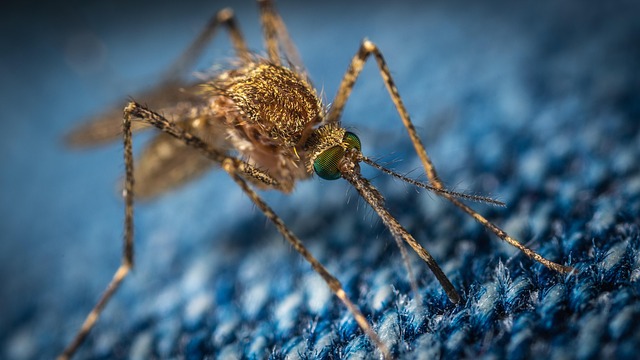
Understanding the behavior of mosquitoes and ticks is a critical step in implementing effective mosquito and tick control strategies. These insects are highly adaptable and have evolved sophisticated methods to survive and reproduce, making traditional eradication difficult. Mosquitoes, for instance, are most active during dawn and dusk, feeding on both humans and animals. They breed in stagnant water, so eliminating these habitats is key to reducing their population. Tick behavior varies by species, but many prefer humid environments and host animals like deer or small mammals. Knowing their preferences allows for targeted control measures, such as habitat manipulation or treating high-risk areas with appropriate repellents.
By studying these behaviors, professionals can develop integrated pest management (IPM) plans that include a combination of strategies. This might involve using natural predators, modifying breeding sites, applying targeted treatments, and educating the public on prevention methods. Such an approach ensures a more sustainable and eco-friendly method of mosquito and tick control, benefiting both human health and the environment.
Natural Repellents: A Safe and Eco-Friendly Approach
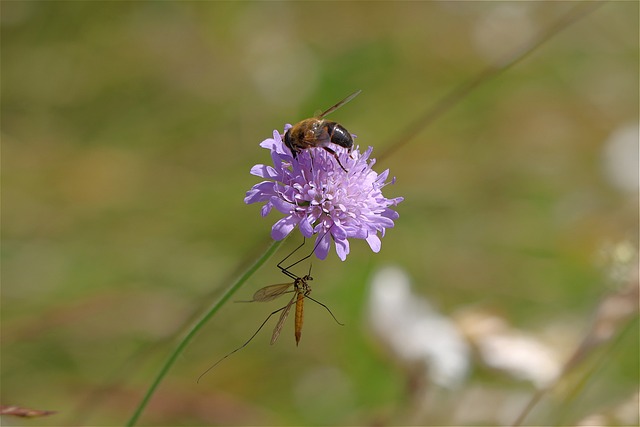
Natural repellents offer a safe and eco-friendly approach to mosquito and tick control, appealing to those concerned about the environmental impact of synthetic chemicals. Plant-based solutions, such as citronella, lavender, and catnip, are known for their aromatic properties that can ward off these pests. These natural compounds contain substances like citral and linalool, which have been studied for their effectiveness in repelling mosquitoes.
Incorporating these natural alternatives into your outdoor spaces can create a more harmonious environment while minimizing the risk of exposure to harmful chemicals. Moreover, using essential oils from these plants in diffusers or topical applications provides a simple and accessible way to protect against mosquito bites without compromising health or damaging ecosystems.
Planting for Mosquito-Free Yards: Aromatic Plants as Allies

Creating a mosquito-free yard is not just about chemical applications; it’s also about harnessing nature’s power. Aromatic plants offer an effective, non-toxic approach to mosquito and tick control. Their distinct scents act as natural repellents, making them valuable allies in your outdoor space. For instance, citronella grass, lavender, basil, and lemon balm are renowned for their ability to ward off these pests.
Incorporating these plants into your garden design can create a serene environment while keeping mosquitoes at bay. Their fragrant oils disrupt the insects’ sensory systems, making them less inclined to linger in areas where these plants thrive. This natural method provides an environmentally friendly solution, allowing you to enjoy your outdoor haven without relying on potentially harmful chemicals.
Physical Barriers: Netting, Screens, and Other Defensive Measures
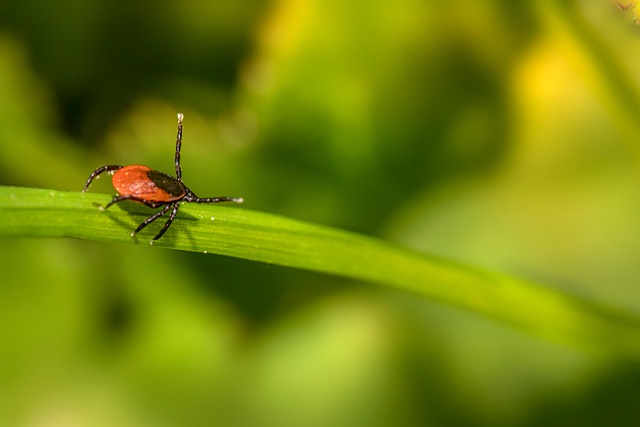
Physical barriers like netting and screens are effective in mosquito and tick control, offering a protective layer against these pests. Installings these measures around outdoor living spaces, such as patios, decks, and bedrooms, can significantly reduce exposure to bites. Netting, in particular, is versatile and can be used for outdoor dining areas, providing a comfortable environment while minimizing insect interference.
Screens on windows and doors are also essential defensive measures, allowing fresh air to circulate while keeping mosquitoes and ticks at bay. Regular maintenance of these barriers, including repairs and cleaning, ensures their continued effectiveness in protecting against mosquito and tick control, enhancing outdoor comfort and safety.
Targeted Treatment: Spot Treatment Strategies for Infested Areas

When it comes to non-toxic mosquito and tick control, targeted treatment through spot treatment strategies is an effective approach for infested areas. This method involves directly applying treatments to specific locations where mosquitoes are breeding or resting, rather than spraying large areas indiscriminately. By focusing on hot spots like stagnant water sources, dense vegetation, or dark corners, you can significantly reduce mosquito populations without resorting to harmful chemicals.
Spot treatment strategies offer several benefits. They minimize the risk of environmental contamination and protect non-target organisms, including beneficial insects and wildlife. Additionally, they are cost-effective and time-saving compared to widespread spraying. This targeted approach ensures that treatments are applied where they are most needed, making it a smart and responsible way to manage mosquito and tick control in both residential and commercial settings.
Professional Services: When to Seek Expert Help for Severe Infestations
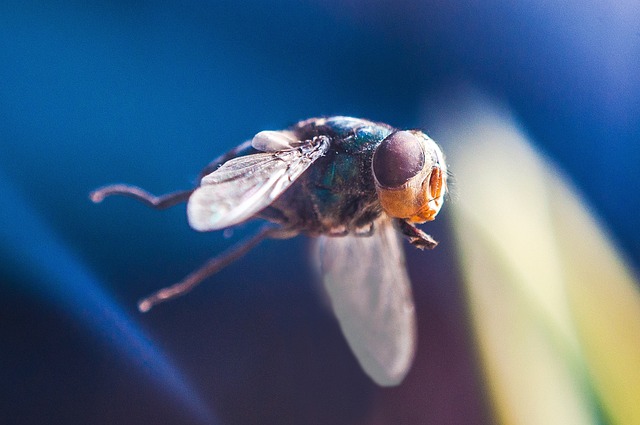
In cases of severe mosquito and tick control issues, it might be time to enlist professional help. While do-it-yourself methods can be effective for minor infestations, complex or widespread problems require specialized knowledge and equipment. Professional services are equipped to handle large-scale treatments, ensuring thorough and targeted applications of safe, environmentally friendly solutions.
These experts understand the unique challenges posed by different mosquito and tick species, employing advanced techniques tailored to specific needs. By seeking professional intervention, homeowners can benefit from expert assessments, customized treatment plans, and ongoing monitoring to prevent future outbreaks, thus providing a lasting solution for a healthier, pest-free environment.
Seasonal Management: Preparing for Mosquito Season Throughout the Year
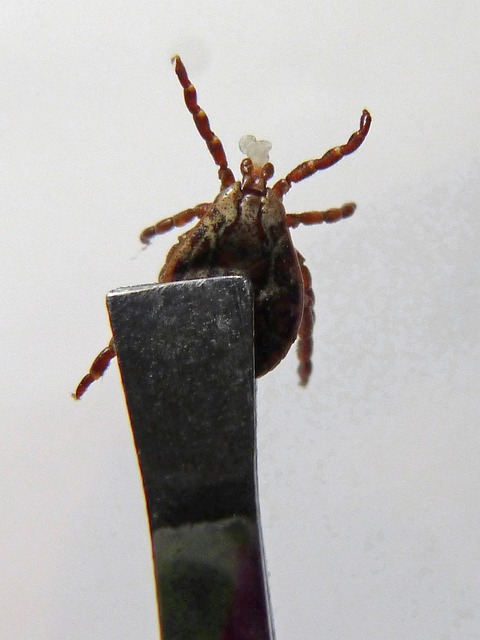
Mosquito and tick control is not just a seasonal concern; it requires year-round preparation for an effective strategy. Seasonal management involves understanding the life cycles of both mosquitoes and ticks, which vary with the changing climate. By staying proactive, homeowners can significantly reduce the risk of these pests during peak seasons.
This proactive approach includes maintaining a clean environment by eliminating standing water—a primary breeding ground for mosquitoes—and regularly trimming vegetation to minimize habitats. Additionally, using appropriate repellents and ensuring windows are properly sealed can provide a first line of defense against mosquito and tick control. Such measures help create a less welcoming environment for these pests, ensuring a more comfortable outdoor experience throughout the year.
Community Efforts: Preventing Mosquito-Borne Diseases on a Larger Scale

In tackling mosquito and tick control, community efforts play a pivotal role in preventing the spread of disease on a larger scale. By fostering collaboration among residents, local governments, and health authorities, communities can implement effective strategies to mitigate mosquito-borne illnesses. This includes sharing knowledge about breeding sites, promoting proper waste management, and encouraging the use of protective measures like insect repellents and nets.
Community initiatives also facilitate the widespread adoption of best practices for mosquito control. Educational campaigns that target both urban and rural areas can raise awareness about disease prevention, while coordinated efforts to eliminate standing water—a primary breeding ground for mosquitoes—can significantly reduce mosquito populations. These collective actions not only protect individual health but also create a more robust defense against vector-borne diseases within the community.
